1. Aldrich F. Posterolateral microdisectomy for cervical monoradiculopathy caused by posterolateral soft cervical disc sequestration. J Neurosurg. 1990; 72:370–377. PMID:
2303870.
2. Baba H, Chen Q, Uchida K, Imura S, Morikawa S, Tomita K. Laminoplasty with foraminotomy for coexisting cervical myelopathy and unilateral radiculopathy: a preliminary report. Spine. 1996; 21:196–202. PMID:
8720404.
3. Caglar YS, Bozkurt M, Kahilogullari G, Tuna H, Bakir A, Torun F, et al. Keyhole approach for posterior cervical discectomy: experience on 84 patients. Minim Invasive Neurosurg. 2007; 50:7–11. PMID:
17546536.

4. Chen BH, Natarajan RN, An HS, Andersson GB. Comparison of biomechanical response to surgical procedures used for cervical radiculopathy: posterior keyhole foraminotomy versus anterior foraminotomy and discectomy versus anterior discectomy with fusion. J Spinal Disord. 2001; 14:17–20. PMID:
11242270.

5. Ebraheim NA, Xu R, Bhatti RA, Yeasting RA. The projection of the cervical disc and uncinate process on the posterior aspect of the cervical spine. Surg Neurol. 1999; 51:363–367. PMID:
10199287.

6. Epstein JA, Lavine LS, Aronson HA, Epstein BS. Cervical spondylotic radiculopathy. the syndrome of foraminal constriction treated by foramenotomy and the removal of osteophytes. Clin Orthop Relat Res. 1965; 40:113–122. PMID:
14304700.
7. Epstein NE. A review of laminoforaminotomy for the management of lateral and foraminal cervical disc herniations or spurs. Surg Neurol. 2002; 57:226–233. PMID:
12173389.

8. Fager CA. Posterolateral approach to ruptured median and paramedian cervical disk. Surg Neurol. 1983; 20:443–452. PMID:
6648783.

9. Henderson CM, Hennessy RG, Shuey HM Jr, Shackelford EG. Posterior-lateral foraminotomy as an exclusive operative technique for cervical radiculopathy: a review of 846 consecutively operated cases. Neurosurgery. 1983; 13:504–512. PMID:
6316196.

10. Herkowitz HN, Kurz LT, Overholt DP. Surgical management of cervical soft disc herniation. A comparison between the anterior and posterior approach. Spine (Phila Pa 1976). 1990; 15:1026–1030. PMID:
2263967.
11. Hunt WE, Miller CA. Management of cervical radiculopathy. Clin Neurosurg. 1986; 33:485–502. PMID:
3791813.
12. Jödicke A, Daentzer D, Kästner S, Asamoto S, Böker DK. Risk factors for outcome and complications of dorsal foraminotomy in cervical disc herniation. Surg Neurol. 2003; 60:124–129. PMID:
12900115.

13. Krupp W, Schattke H, Müke R. Clinical results of the foraminotomy as described by Frykholm for the treatment of lateral cervical disc herniation. Acta Neurochir (Wien). 1990; 107:22–29. PMID:
2096604.

14. Murphey F, Simmons JC, Brunson B. Surgical treatment of laterally ruptured cervical disc. Review of 648 cases, 1939 to 1972. J Neurosurg. 1973; 38:679–683. PMID:
4710649.
15. O'Toole JE, Sheikh H, Eichholz KM, Fessler RG, Perez-Cruet MJ. Endoscopic posterior cervical foraminotomy and discectomy. Neurosurg Clin N Am. 2006; 17:411–422. PMID:
17010891.
16. Onimus M, Destrumelle N, Gangloff S. Surgical treatment of cervical disk displacement. Anterior or posterior approach? Rev Chir Orthop Reparatrice Appar Mot. 1995; 81:296–301. PMID:
8559998.
17. Raynor RB, Pugh J, Shapiro I. Cervical facetectomy and its effect on spine strength. J Neurosurg. 1985; 63:278–282. PMID:
4020449.

18. Roh SW, Kim DH, Cardoso AC, Fessler RG. Endoscopic foraminotomy using MED system in cadaveric specimens. Spine (Phila Pa 1976). 2000; 25:260–264. PMID:
10685492.

19. Samartzis D, Shen FH, Lyon C, Phillips M, Goldberg EJ, An HS. Does rigid instrumentation increase the fusion rate in one-level anterior cervical discectomy and fusion? Spine J. 2004; 4:636–643. PMID:
15541695.

20. Samii M, Völkening D, Sepehrnia A, Penkert G, Baumann H. Surgical treatment of myeloradiculopathy in cervical spondylosis. A report on 438 operations. Neurosurg Rev. 1989; 12:285–290. PMID:
2594204.

21. Tanaka N, Fujimoto Y, An HS, Ikuta Y, Yasuda M. The anatomic relation among the nerve roots, intervertebral foramina, and intervertebral discs of the cervical spine. Spine (Phila Pa 1976). 2000; 25:286–291. PMID:
10703098.

22. Woertgen C, Holzschuh M, Rothoerl RD, Haeusler E, Brawanski A. Prognostic factors of posterior cervical disc surgery: a prospective, consecutive study of 54 patients. Neurosurgery. 1997; 40:724–728. PMID:
9092845.

23. Zdeblick TA, Zou D, Warden KE, McCabe R, Kunz D, Vanderby R. Cervical stability after foraminotomy. A biomechanical in vitro analysis. J Bone Joint Surg Am. 1992; 74:22–27. PMID:
1734010.

24. Zeidman SM, Ducker TB. Posterior cervical laminoforaminotomy for radiculopathy: review of 172 cases. Neurosurgery. 1993; 33:356–362. PMID:
8413864.
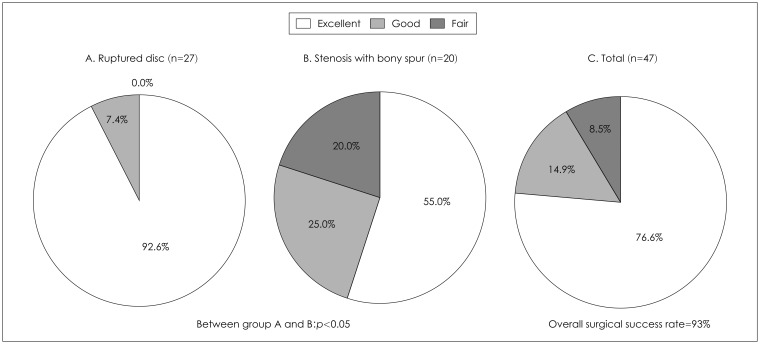




 PDF
PDF ePub
ePub Citation
Citation Print
Print


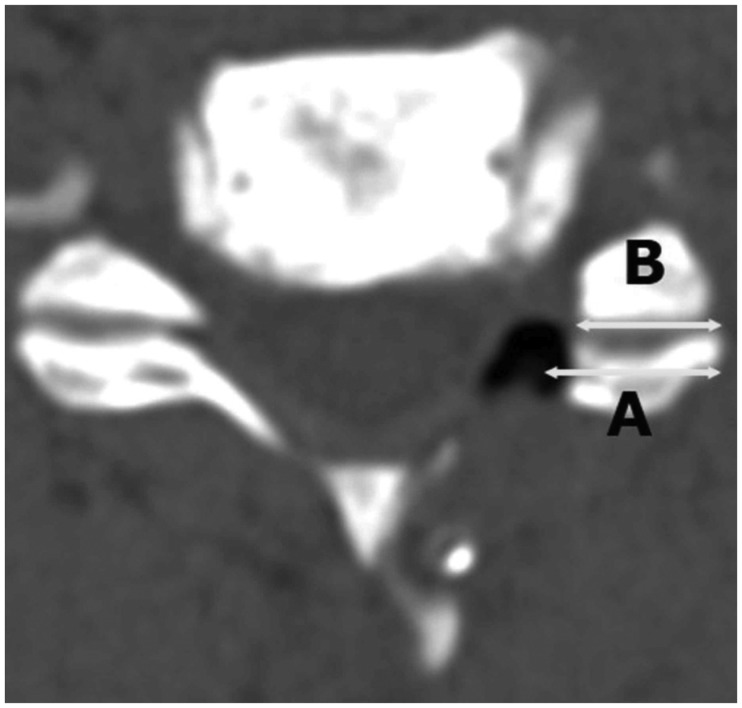

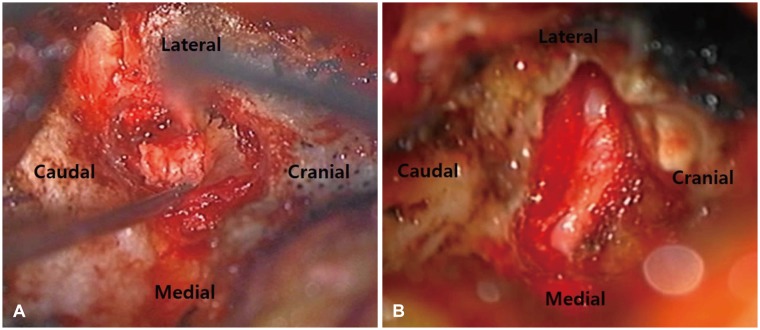
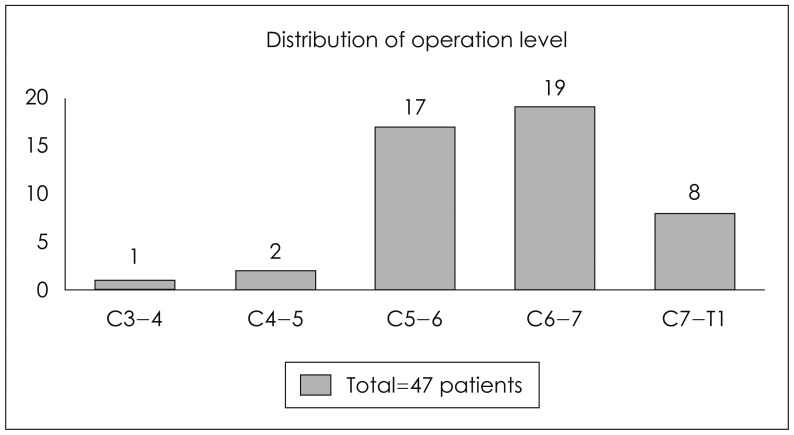
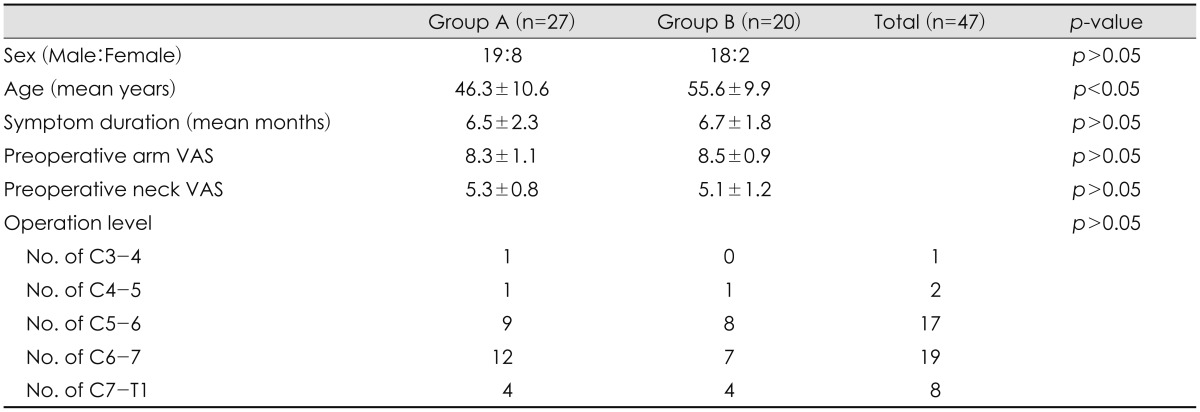
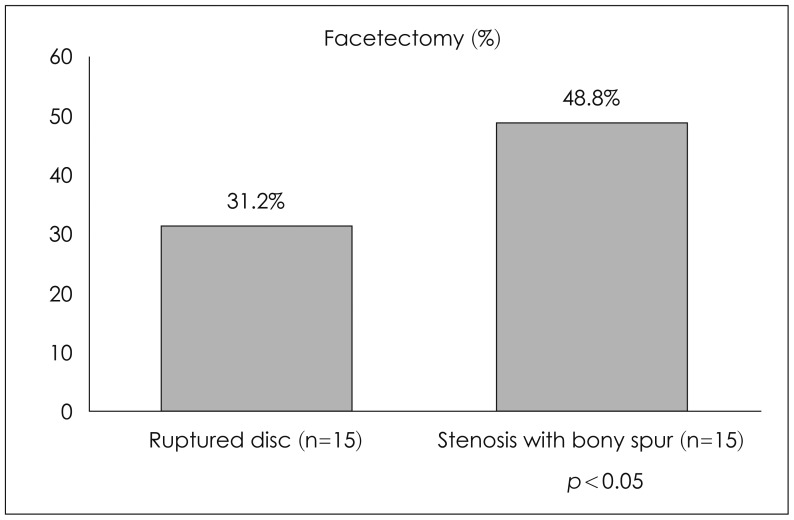
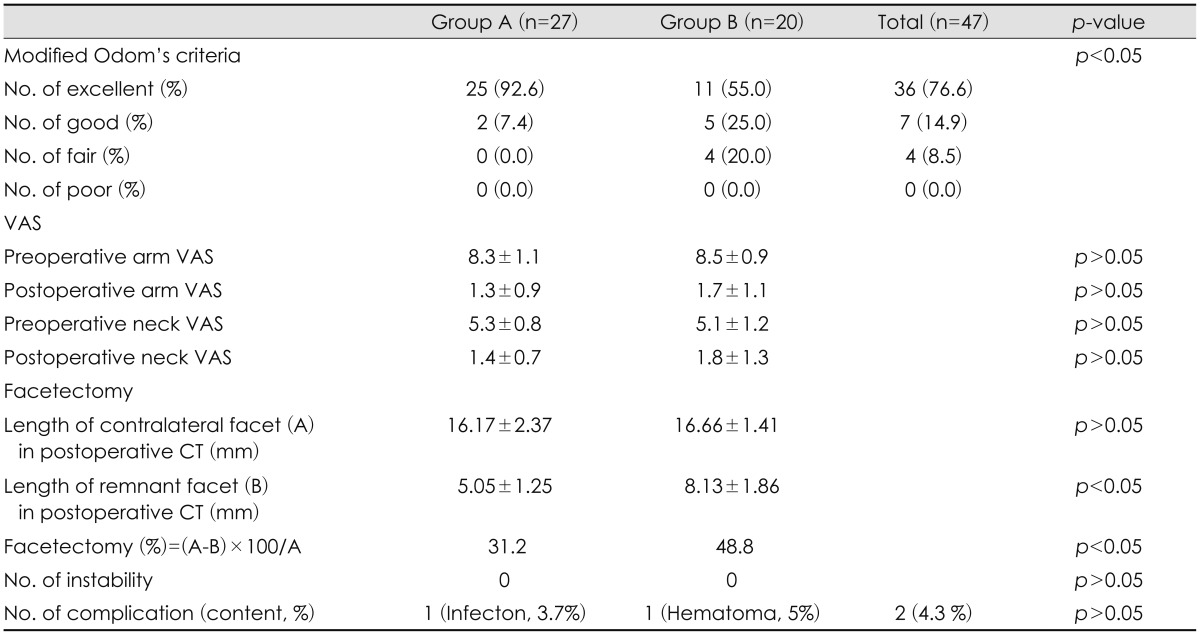
 XML Download
XML Download